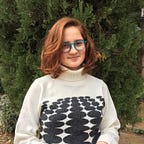2010 IMO Shortlist Problem
Two outstanding solutions in a mindblowing competition: International Mathematical Olympiad
IMO (International Mathematical Olympiad) is a competition to which a lot of high school students from different countries attend. The students who attend to IMO are qualified to be a member of their country’s national math team. The Olympiad takes 2 days and each day students are given four and a half hours to solve 3 problems selected by the Problem Selection Committee. The participating countries except the host country are expected to propose up to six questions, with solutions.
The aims of the IMO are:
to discover, encourage and challenge mathematically gifted young people in all countries;
to foster friendly international relationships among mathematicians of all countries;
to create an opportunity for the exchange of information on school syllabuses and practices throughout the world;
to promote mathematics generally.
As you may understand from the title, we are going to solve a shortlist problem. Let me make it clear what is meant with “shortlist”. There are a lot of problems proposed from all over the world for the IMO. Thus the committee has to select some of them to be shortlisted. The shortlist problems are the ones that passed the first election on the way to becoming an official IMO question. Having said that, let’s take a look at what IMO problems look like. In this article, we will be solving a geometry problem from 2010 IMO shortlist.
Problem
Let ABC be an acute triangle with D, E, F the feet of the altitudes lying on BC, CA, AB respectively. One of the intersection points of the line EF and the circumcircle is P. The lines BP and DF meet at÷ point Q. Prove that AP = AQ.
Solution
There are two possible configurations for what is explained in the question. One way of solving it is by handling both configurations with 2 different diagrams and the other way is by using directed angles. If you have no idea about what directed angles are I recommend you to read our article “Directed Angles”. Let’s start with the configuration in which Q is outside of the circle.
1st Configuration
Because ACBP is cyclic, ∠BCA = ∠APQ = alpha.
As CF, AD, BE are altitudes, CDFA is cyclic. Thus, ∠ACB = ∠DFB = ∠AFQ = alpha.
∠APQ = ∠AFQ = alpha, thus AFPQ is cyclic.
And lastly, because of the altitudes, CEFB is cyclic. It gives us that, ∠ACB = ∠AFE = alpha.
As AFPQ is cyclic, ∠AFE = ∠AQP = alpha.
We also found earlier that ∠APQ = alpha. Thus AP = AQ.
2nd Configuration
In this second configuration, Q is inside of the circle but the approach is the same. Let ∠BCA = alpha, then ∠BCA = ∠BPA = alpha.
As BCEF and CDFA are cyclic, ∠BCA = ∠EFA = ∠DFB = alpha.
Now, we see that ∠QPA = ∠QFB = alpha. Thus, we can say that QPAF is cyclic. Then it becomes easy to see that ∠AQP is also alpha because ∠PFA = ∠PQA = alpha. Thus AP = AQ.
Solution With Directed Angles
Well, the most beautiful solution is by using directed angles as the enable us to solve without having to draw a figure. In case you are not familiar with directed angles you can read our article: “Directed Angles”
Since ABCP and AFDC are cyclic,
∡APB = ∡ACB = BDF = ∡AFQ
Thus, APQF is cyclic. We also know that BFEC is cyclic.
∡ACB = ∡ECB = ∡EFA = ∡PFA.
In APQF,
∡APQ = ∡APB = ∡ACB = ∡PFA = ∡PQA.
That is the whole solution and it is far shorter than the previous one.
That is it from this article, see you in our next articles.
